
As gardeners, we are keenly aware that Mother Nature holds the cards when it comes to having a good growing season or not. So, we’re always on the lookout for tips, tricks, and hacks that will help us with the things we do have control over.
Do you know a surefire way to get rid of powdery mildew? We want to hear about it. A plant that stores nutrients but doesn’t use them, so you can grow it and then mulch it to fertilize your garden? Where do I buy the seeds?
We’re always searching for ways to make gardening a little easier, a bit more of a sure thing.
But what if there are things we’re doing (or not doing) that are making it harder to get good results from all the work we put in?

Zucchini has a reputation for practically growing itself. We’ve all heard and told stories about how we turned our backs on our zucchini for thirty seconds only to find a zucchini the size of a dachshund when we next looked.
So, it can be pretty frustrating, even embarrassing, when we’re having a bad season and not getting a whole lot of zucchini. In your quest for a larger yield, sometimes it’s more helpful to make sure something isn’t wrong.
To that end, here are three of the most common mishaps that can harm your zucchini harvest.
Not Pruning Zucchini Plants
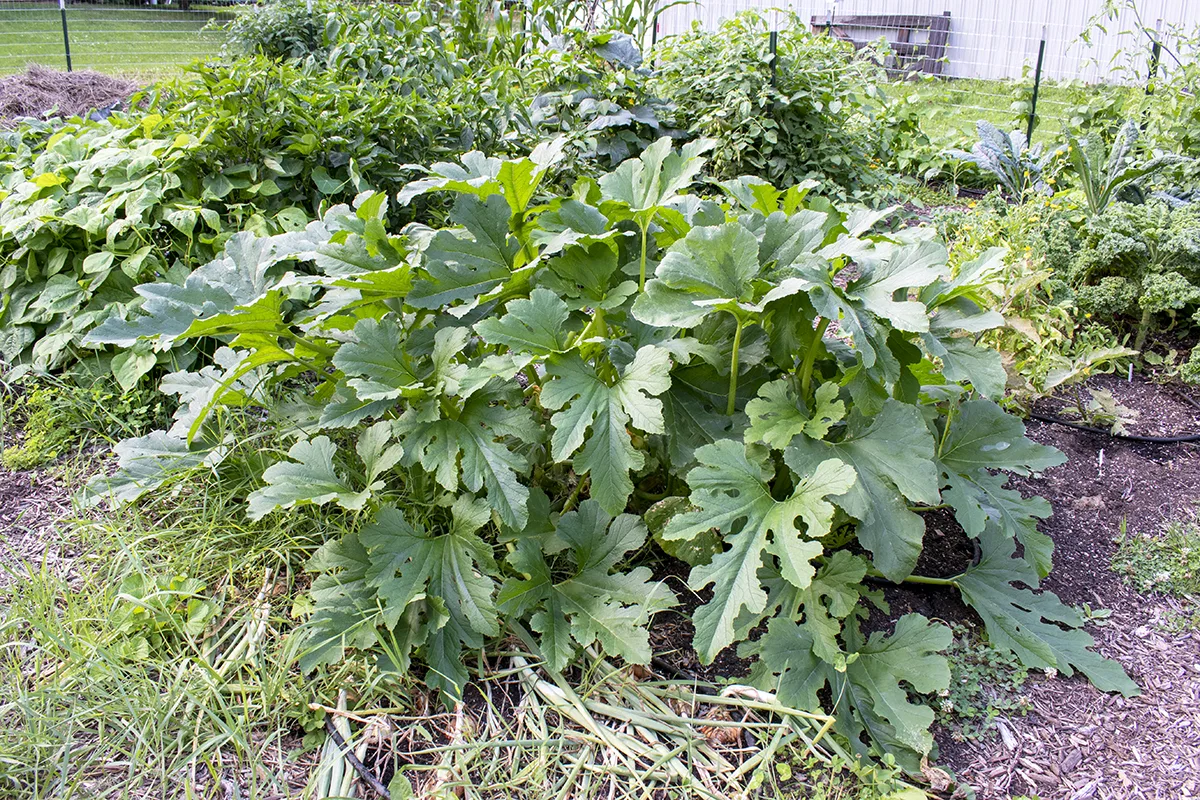
I’m not gonna lie; I’m guilty of not pruning my zucchini. I grow an Italian heirloom variety, and I love the way it looks when it’s full and lush. I’m pretty sure I could put a lawn chair in it and hide in there drinking iced tea all summer.
But inevitably, all those leaves end up shading out the plant, which leads to fewer flowers, fewer squash, and then powdery mildew.
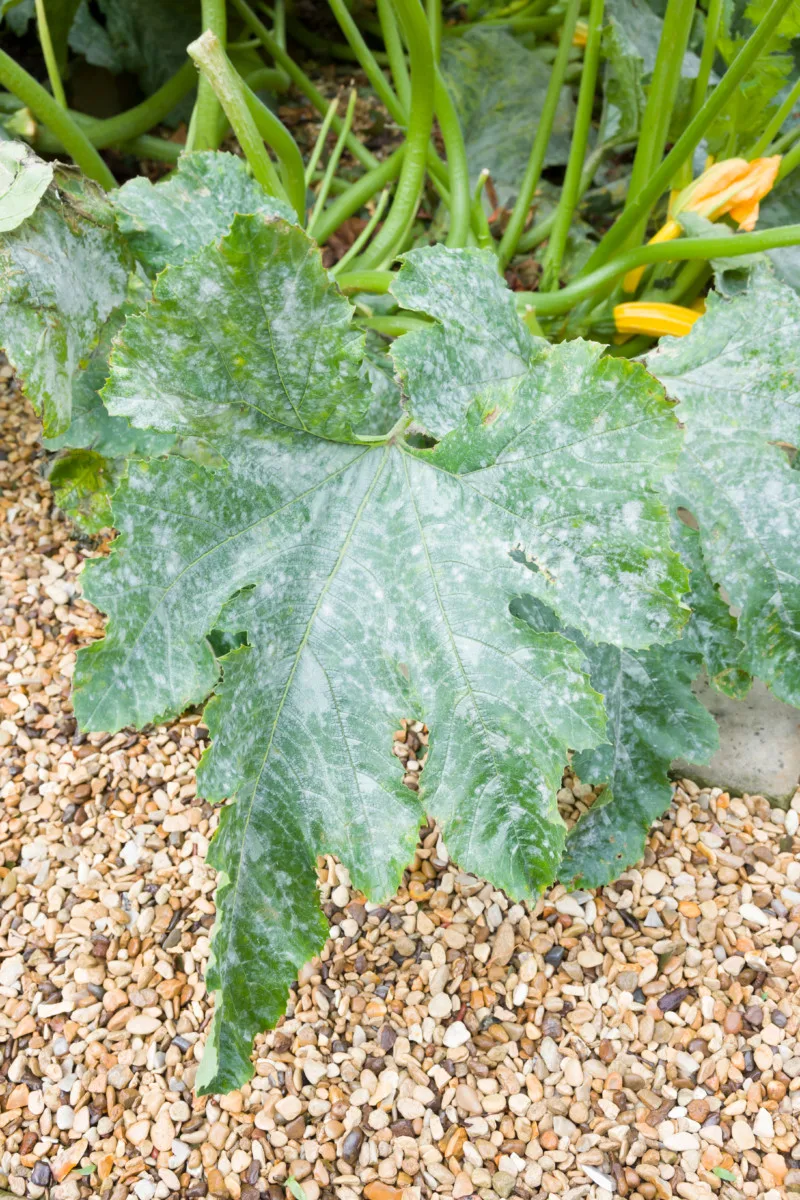
If you do one thing in the way of pruning, make sure your plant has one single leader stem. Prune off any secondary leaders. That way, all the energy goes into that one vine to produce fruit.
Even better, take the time to thin out some of the leaves every couple of weeks. This will allow for better air circulation and for light to penetrate the heart of the plant. If you want to get serious about pruning your zucchini and getting as many as you can, consider staking and growing your zucchini vertically or using a tomato cage.
Low Pollination Rates
Many new and even some experienced gardeners are unaware of what low pollination looks like in a zucchini plant. So they may be struggling with pollination issues and not even know it. If your plant is covered with flowers, but you’re not getting zucchini, it’s likely that low pollination is the culprit.
One surefire way to tell is to keep an eye on female flowers specifically.
What’s the difference?
The flowers themselves look pretty similar; it’s what’s underneath that tells you what sex they are. Male flowers grow on long, skinny stems, like what you would expect from most flowers. But female flowers grow at the end of a small, immature fruit. If the squash flower is attached to a teeny tiny zucchini, that’s a female flower.
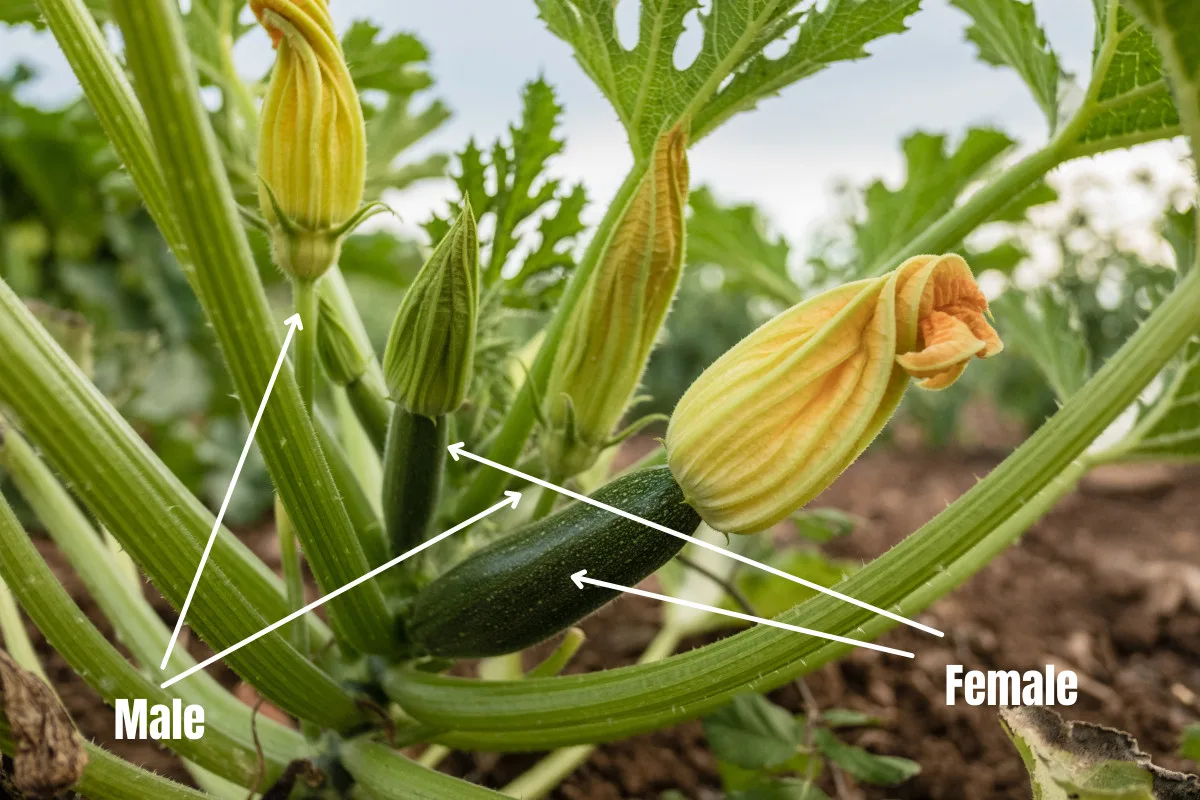
If those teeny, tiny zucchini turn brown and wrinkly, it means that the flower didn’t get pollinated.
These flowers are only viable for a day, so pollination is important. Luckily, there are some pretty easy ways you can make sure that happens.
Don’t pinch off male flowers
When zucchini are first planted, they will throw a lot of male flowers as they grow and become established. Once the plant is sexually mature, it will begin to produce both male and female flowers. You will often see it suggested that you pinch off these prolific male flowers. No, don’t do it!
Those first flowers are there for a reason. They draw pollinators in. Although the plant can’t produce fruit yet, those flowers start attracting pollinators to the area. When the plant does begin throwing female flowers, the pollinators will already be there, visiting regularly.
Plant flowers and herbs around your zucchini
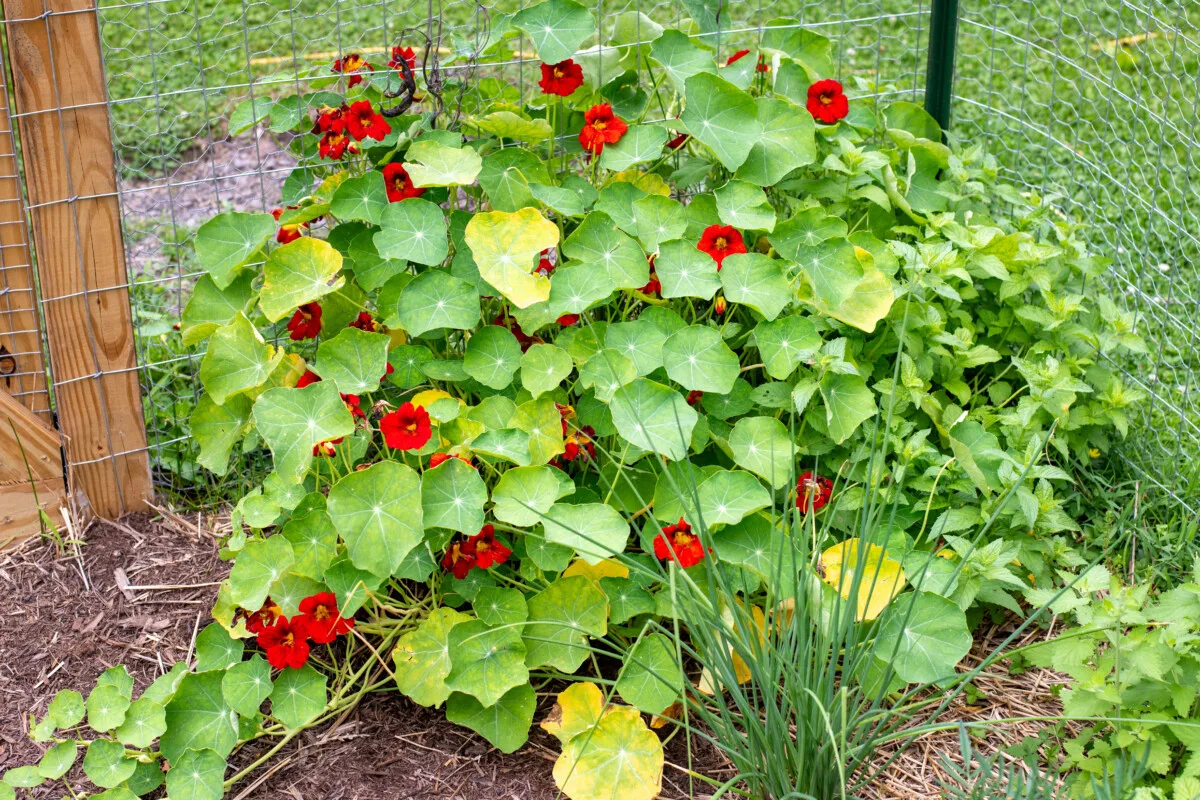
I’m a huge advocate for planting flowers all over your vegetable garden. Not only does it look like something out of a fancy magazine. Not only do you get to enjoy fresh-cut flowers all summer long, but more importantly, you turn your garden into a pollinator magnet.
Borage is an excellent plant for attracting bees. (Psst, it also happens to be that plant that stores nutrients so you can cut it down later to fertilize your garden.) Nasturtiums are another easy-to-grow flower that brings in bees. My favorite pollinator attractor has to be Tulsi, also known as holy basil. Not only does this stuff make incredible tea (it smells like blueberries), but it never fails to bring all the pollinators to the yard.
Hand pollinate
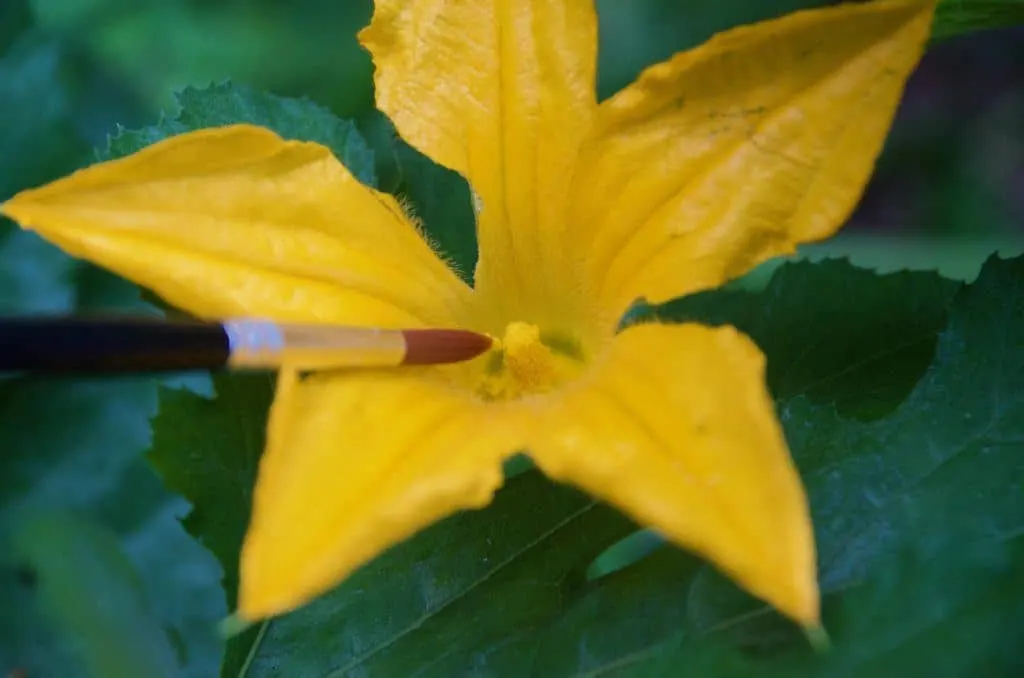
The best thing you can do to fix low pollination rates is to attract more pollinators. But while you wait for them to find your zucchini, you can hand pollinate your squash and still enjoy a good zucchini harvest.
Looking in the Wrong Place for Pests
There is one squash pest that is super sneaky and can wipe out your squash harvest without you knowing it’s there. If you’re not looking for it (or, better, preventing it), then it’s easy to pin their damage on another common squash pest.
Believe it or not, squash bugs don’t do a whole lot of damage to mature plants. You need a large infestation while the plant is still young for them to do irreparable harm to your squash plants. On their own, they’re more of a nuisance than anything else. But if there is another unseen pest working in tandem, then it’s bye-bye zucchini fritters and zucchini bread.
Too often, gardeners pin a failing zucchini or summer squash on squash bugs. It makes sense – they’re the pest you can see, so they’re the pest you treat. But even after you’ve dealt with the squash bugs and your squash begins to collapse, we assume we didn’t catch the squash bugs in time.
And that’s about the time we find the evidence of the true culprit – frass.
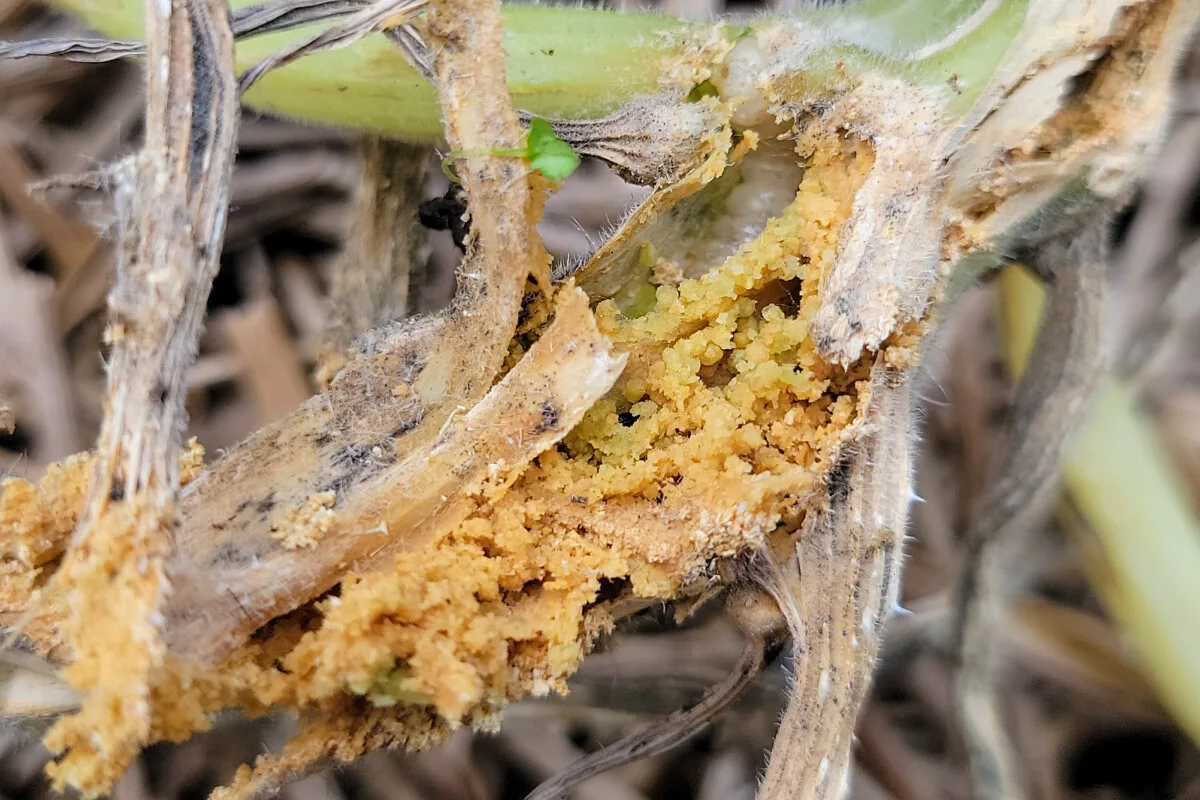
Frass is a fancy word for squash borer poop. It’s yellow to tan and looks like fine, damp sawdust. You’ll usually discover it somewhere along the vine where it’s been in contact with the ground. That’s where the adult larva has finally bored out of the vine and into the ground, where it will spend the winter.
Then, in early June of next year, it will emerge and deposit an egg on the stem of young squash plants. That egg will hatch, unseen by the gardener tending the plant. It will bore into the stem, where it will slowly begin feeding on the squash, destroying the vascular system of your plant. And when does this damage start to become evident?
Oh, right around the time you start seeing the squash bugs.
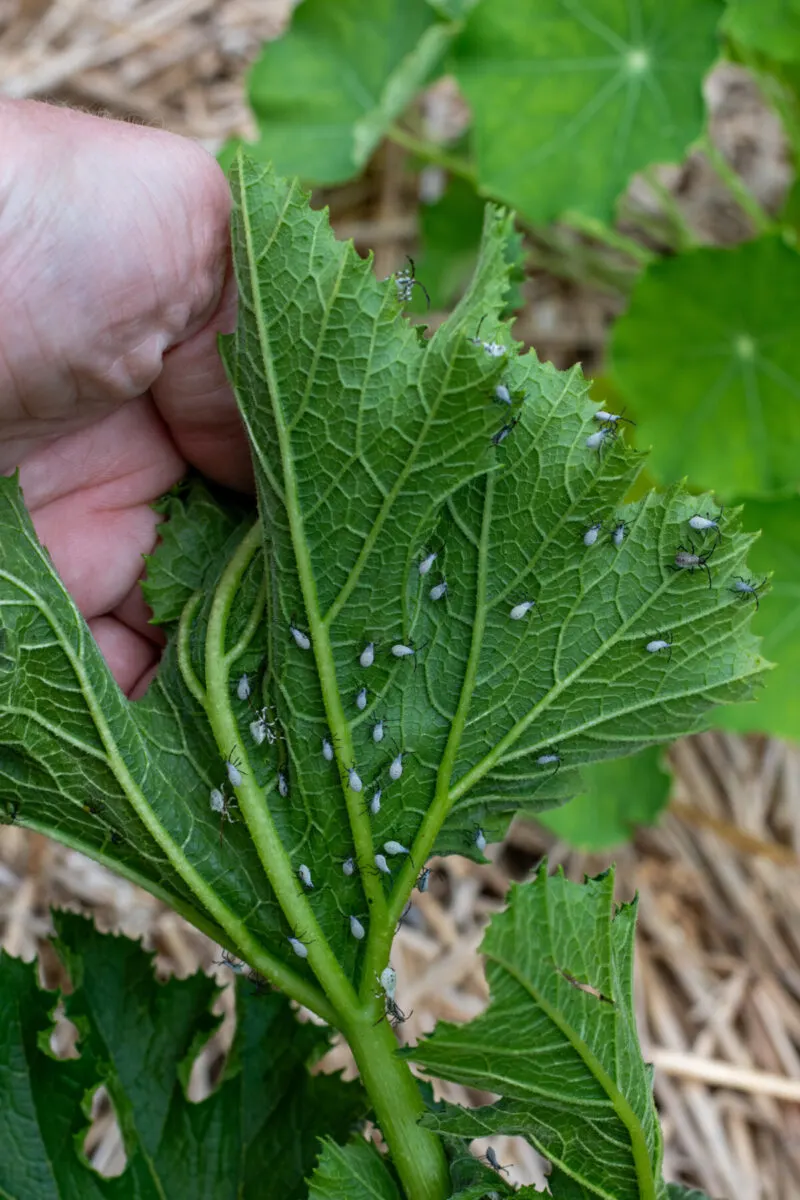
Luckily, there is a simple method of preventing squash borers from gaining access to your zucchini and other squash plants. In late spring, before the larva emerges, take thin strips of aluminum foil and wrap them around the base of your squash plants, getting as close to the ground as possible. You want to wrap them snug so there are no gaps, but not so snug as to prevent the stem from growing.
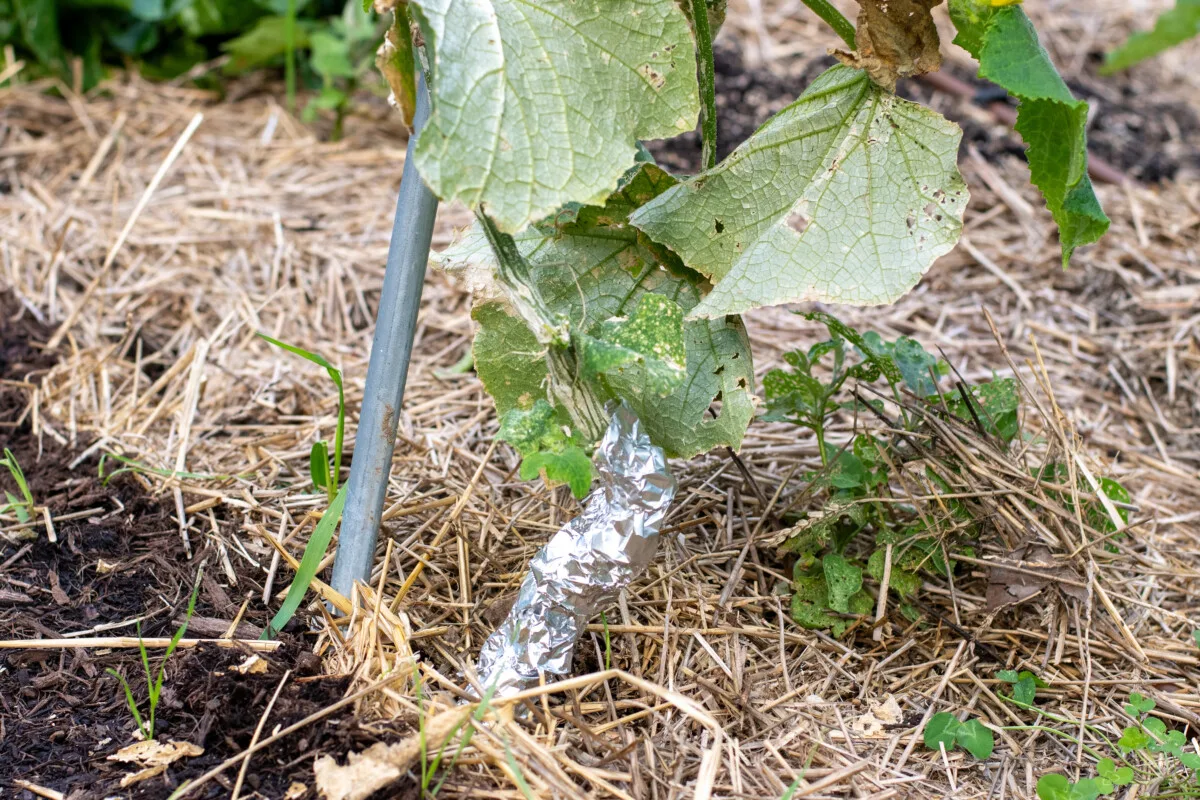
Chomp on that, newly emerged squash borer larvae!
Bonus Tip:

While not doing this isn’t “harming” your zucchini harvest, it will certainly give it a boost. About two-three weeks after you plant your first zucchini, plant a second one from seed. Zucchini naturally tend to slow down a bit after that first rush of fruit. By the time your first plant starts petering out, that second plant will be coming in clutch with plenty more zucchini to finish off the summer.
Mmm, homemade zucchini relish, here I come!

Get the famous Rural Sprout newsletter delivered to your inbox.
Including Sunday musings from our editor, Tracey, as well as “What’s Up Wednesday” our roundup of what’s in season and new article updates and alerts.


